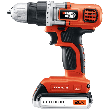How to Read Your Water Meter
Written by Lee Wyatt (last updated June 30, 2021)
If you are looking to save some money on your water bills, then one of the very first things that you will need to do is learn how to read your water meter. After all, if you are looking to save money, you need to know how much you are spending don't you? The same principle works in your utilities as well. Instead of waiting to look at your monthly water bill, why not look at the readings as you go? It would be much the same as looking at the receipts that you get every time you buy something. All you need to do is follow these simple directions.
- Gather your tools. Before you can read your water meter, you should gather together a few tools. These tools aren't to put anything together, but rather to allow you access to the meter, and properly utilize the information that you find there. These tools are a screwdriver or stick, and a pen and paper.
- Locate the meter. The next thing that you will need to do is actually locate the meter. You can do this by either looking around your home, calling the utilities company, or by following the meter reader when they come around. Typically the water meter is located near the curb of your home, and will have a cover (usually metal or plastic) on it.
- Open the cover. Place your screwdriver or strong stick into the slot you find in the meter cover. Usually this slot will be located near the edge of the cover to allow you the chance to apply a little leverage so you have an easier time of lifting up the lid. Once you do open the lid, be careful when you look inside. Often insects, snakes, or other critters will make a home out of the box, and it could be dangerous to stick your head or hand in there. If you find anything, then you will need to deal with it. In addition, if you find any standing water you will want to bail it out, and check for a leak.
- Read it. The first thing that you need to know when actually reading your water meter is that most, if not all, water meters measure water in cubic feet (which is roughly one cubic foot being equal to 7-1/2 gallons). When you look at the meter, you will see several numbers on the dial, kind of like the miles on a speedometer. Just as with a speedometer, you can ignore the first two (usually in a darker color), and focus on the remaining numbers.
- Write down what you see. Write down the numbers that you find, if you want you can write them all down. When writing them down you should place them in a notebook that you can dedicate solely to the use of this. Close up the cover, and then go about your business as normal.
- Repeat the process as necessary. After a couple of days, repeat the entire process, and compare the results. If you would like to know how much water you have used, simply subtract your first reading from your later one to get the amount of water used. Repeat the entire process as often as you want to get an idea of how much water you have used between readings. To get an accurate reading for the entire month, simply add together the readings that you took for the entire month, or subtract the first reading of the month to the last reading of the month.
Author Bio
Lee Wyatt
Contributor of numerous Tips.Net articles, Lee Wyatt is quickly becoming a regular "Jack of all trades." He is currently an independent contractor specializing in writing and editing. Contact him today for all of your writing and editing needs! Click here to contact. Learn more about Lee...
What is Cold Weather Caulking?
As I was wandering through a home improvement store the other day, I cam across a product that I had never heard of ...
Discover More
Homemade Cinnamon Cranberry Sauce
Freshly made cranberry sauce can be a wonderful addition to any meal, and doesn't need to be relegated to Thanksgiving ...
Discover More
Painting over Wallpaper
Are you looking for a way to change the look of a room that has wallpaper, but you don't really feel like pulling the ...
Discover More
More Home Improvement Tips
Adjusting Water Heater Temperature
Adjusting the temperature of your water heater is as easy as moving the dial of your thermostat. The difficult part is ...
Discover More
Choosing a Water Heater
Water heaters are an important piece of equipment in the home, and choosing the right one can mean all the difference ...
Discover More
Insulating Pipes
A fairly common problem that many homeowners face during the cold winter months is their pipes freezing and bursting. One ...
Discover More

Comments